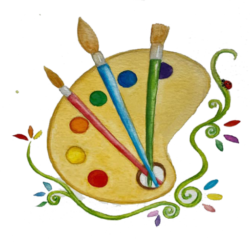
Art has always been a universal language of expression, creativity, and imagination. For children, art is not only a fun activity but also an essential part of learning and development. In today’s world, where academic pressure and technology dominate children’s lives, introducing them to art provides balance, joy, and valuable life skills. At Chang’s Little Artist Studio, we believe that every child is born with a creative spark, and when nurtured correctly, this spark can grow into a lifelong gift. But why exactly should every child learn art? Let’s explore the many reasons in detail.
The Power of Creativity: Unlocking Imagination Through Art
When children are exposed to art from an early age, they develop a powerful sense of creativity and imagination. Creativity is not limited to painting or drawing—it’s about thinking differently, exploring possibilities, and finding innovative solutions to everyday problems. Through activities like painting, sketching, clay modeling, or crafting, kids learn to create something from nothing, which boosts their ability to think outside the box.
In today’s fast-changing world, creativity is considered one of the most important skills for success. Whether your child grows up to be a scientist, engineer, doctor, teacher, or entrepreneur, creativity will give them the edge to approach challenges differently. For example, an engineer who can imagine unique designs, or a doctor who can think creatively about patient care, is often more successful in their field. By allowing children to practice art regularly, we give them a safe space to experiment with colors, textures, and ideas, which builds the foundation of creative thinking.
Moreover, imagination plays a huge role in mental well-being. Children who learn to use imagination through art often find it easier to cope with stress and express emotions positively. Instead of bottling up feelings, they use drawing or painting as an outlet to communicate. This is why many psychologists and educators recommend introducing art as part of early childhood development. At Chang’s Little Artist Studio, we have seen how children blossom when given freedom to imagine, create, and dream big through art.
Building Focus, Discipline, and Problem-Solving Skills
Art is more than play—it’s a discipline. When a child sits down to complete a painting or sculpture, they learn patience, attention to detail, and perseverance. Unlike fast-paced digital activities, art requires time and concentration. A child might spend hours trying to perfect the shade of a color, balance proportions, or complete a drawing, and this process builds their ability to focus deeply on a task.
In addition, art teaches problem-solving skills. Imagine a child who accidentally spills water on their drawing. Instead of giving up, they find ways to turn the mistake into part of their design. Or perhaps they run out of a certain paint color—they mix two others to create a new shade. These small but significant problem-solving experiences teach children resilience and adaptability, two qualities essential in life.
Discipline also naturally comes with practice. Completing an art project requires starting, planning, and finishing—a structure that children can apply to academics and other areas of life. Studies show that children who engage in regular artistic activities perform better in school subjects because they develop organizational skills, attention span, and an ability to think critically.
At Chang’s Little Artist Studio, we design lessons that encourage children to focus without pressure. They learn to enjoy the process, value mistakes as part of learning, and celebrate the joy of completing a project. Parents often notice that children who participate in art classes show improved concentration in schoolwork, better handwriting, and enhanced problem-solving in daily life. Art, therefore, is not just about colors and brushes—it’s about training the mind to be focused, disciplined, and solution-oriented.
Art as a Language: Building Communication and Expression
Not all children find it easy to express themselves through words. Some are shy, some are introverted, and others simply haven’t found their voice yet. Art gives children a powerful alternative language of expression. With just a few strokes of color, a child can communicate happiness, sadness, fear, or excitement. A drawing of a rainbow may represent joy, while darker shades might reflect stress. This unspoken language helps parents and teachers understand what children feel inside.
Art therapy has been widely used across the world to help children deal with emotions, trauma, or developmental challenges. Even in everyday situations, children who are encouraged to draw or paint often find it easier to share what they are going through. For example, a child who struggles to explain a difficult day at school may draw an image that reflects their feelings. This opens the door for parents and teachers to provide support and comfort.
Communication through art also strengthens a child’s storytelling abilities. When children are asked to explain their artwork, they build narrative skills, vocabulary, and confidence in speaking. Over time, this practice helps them in academics, social interactions, and public speaking. At Chang’s Little Artist Studio, we encourage children to present and explain their artwork, allowing them to share their perspectives and ideas proudly.
Moreover, art also teaches the importance of listening and appreciating others’ expressions. When children work in groups, they learn to respect different styles and opinions, building empathy and cultural understanding. In a diverse world, these are critical skills for becoming open-minded and compassionate individuals.
Confidence, Self-Esteem, and Emotional Growth Through Art
One of the most beautiful benefits of art is how it builds a child’s confidence. Every time a child completes a drawing, painting, or sculpture, they experience a sense of accomplishment. Even small milestones—like mixing the right shade or improving a sketch—boost their self-esteem. Parents often see their children beam with pride when they show off their artwork on the fridge or in a classroom exhibition.
Confidence gained from art spills over into other areas of life. A child who feels proud of their painting is more likely to participate in school activities, voice opinions in class, and approach new challenges without fear. This cycle of achievement and encouragement plays a big role in shaping a child’s emotional growth.
Art also teaches resilience. Not every attempt at drawing will be perfect. Children learn that mistakes are part of the process and that improvement comes with practice. This mindset helps them handle setbacks in other areas, from academics to sports. Instead of giving up, they try again—an invaluable life lesson.
At Chang’s Little Artist Studio, we celebrate every child’s uniqueness. We don’t measure success by perfection but by effort, creativity, and growth. We’ve seen shy children transform into confident artists simply because they were given the freedom to explore and the encouragement to keep trying. This emotional empowerment stays with them long after they leave the studio, shaping them into strong, confident individuals.
Social Skills, Teamwork, and Cultural Appreciation
Art is often seen as a solitary activity, but in reality, it plays a huge role in developing social skills. When children participate in group art classes, they share ideas, learn from each other, and collaborate on projects. This teamwork builds cooperation, patience, and respect for different perspectives. For example, in a mural project, every child contributes their unique style, but together they create something beautiful as a team.
Group art sessions also encourage healthy social interaction. Children learn to give and receive feedback, cheer for each other’s work, and celebrate differences. These experiences help them grow into empathetic individuals who appreciate diversity.
Art is also deeply connected to culture. Through exposure to different styles, traditions, and histories, children gain an understanding of the world around them. They might paint landscapes inspired by their own culture or learn about famous artists from other countries. This cultural appreciation broadens their worldview and helps them respect traditions different from their own.
At Chang’s Little Artist Studio, we organize group projects, cultural art days, and exhibitions where children can showcase their creativity. Parents often notice how their children become more open-minded, cooperative, and respectful of others after joining group art activities. Beyond creativity, these skills prepare them for real-life teamwork in school, work, and society.
Every Child is an Artist in the Making
Art is not just an extracurricular activity—it’s a life skill. From creativity and problem-solving to confidence and emotional growth, art plays a powerful role in shaping a child’s future. At Chang’s Little Artist Studio, we believe every child deserves the chance to discover the joy of creating, expressing, and sharing through art.
When children learn art, they gain more than just skills with a brush—they develop imagination, focus, empathy, resilience, and confidence. These qualities prepare them not only for academic success but also for life’s challenges.
As Pablo Picasso once said, “Every child is an artist. The problem is how to remain an artist once we grow up.” By giving children the opportunity to learn art today, we ensure they carry this creativity into adulthood, making them happier, more successful, and more fulfilled individuals.
